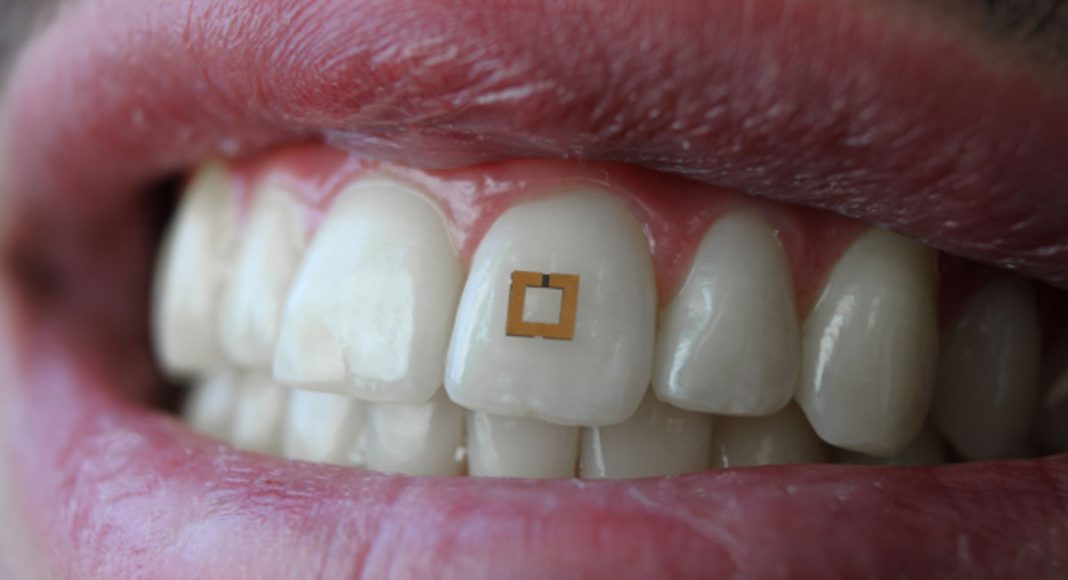How about instead of weighing our food and trying to figure out what a single serving size of potato chips is, we just have our mouths tell us? The future is here, kids, and it looks a lot like a diamond-studded tooth.
Engineers at Tufts University have developed an itty bitty tooth sensor that can track glucose, salt and alcohol, and wirelessly transmit the data to an electronic tracking device.
https://giphy.com/gifs/d38UdY0e4RFmM
The tiny sensor, which measures just 2 square millimeters, has three layers: a central “bio-responsive” layer that absorbs the nutrient and/or other chemicals to be detected, and two outer layers consisting of two square-shaped gold rings. “Together,” says Tufts, “the three layers act like a tiny antenna, collecting and transmitting waves in the radio-frequency spectrum.”
https://www.instagram.com/p/BYYmg-pF494
Previous wearable devices for monitoring dietary intake suffered from limitations such as requiring the use of a mouth guard, bulky wiring, or necessitating frequent replacement as the sensors rapidly degraded. Tufts engineers sought a more adoptable technology and developed a sensor with a mere 2mm x 2mm footprint that can flexibly conform and bond to the irregular surface of a tooth. In a similar fashion to the way a toll is collected on a highway, the sensors transmit their data wirelessly in response to an incoming radiofrequency signal.
Currently, the prototype is only sensitive to glucose, salt and alcohol, but researchers are working to develop a version that can detect a wider range of chemicals and nutrients.
-
Related Story: Cannabis Pop Tarts For Your Morning Sweet Tooth
“In theory we can modify the bioresponsive layer in these sensors to target other chemicals – we are really limited only by our creativity,” said Fiorenzo Omenetto, Ph.D., corresponding author and the Frank C. Doble Professor of Engineering at Tufts. “We have extended common RFID [radiofrequency ID] technology to a sensor package that can dynamically read and transmit information on its environment, whether it is affixed to a tooth, to skin, or any other surface.”


